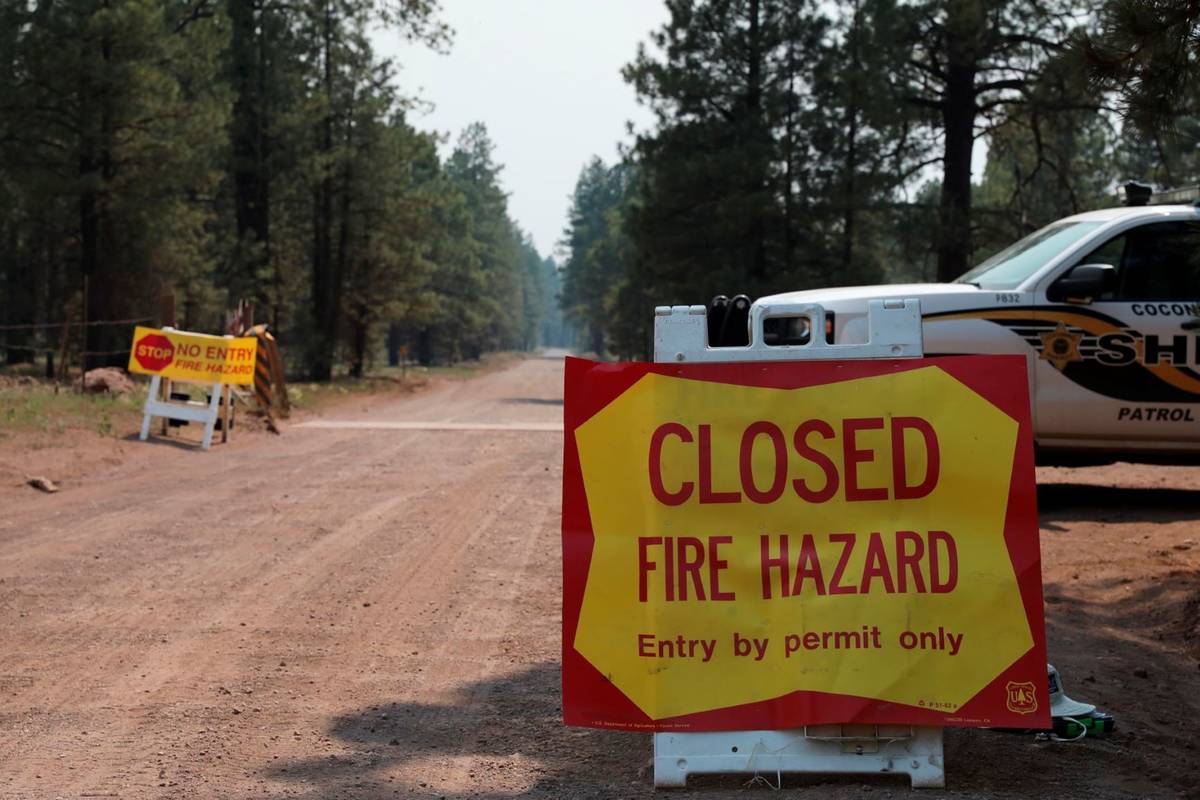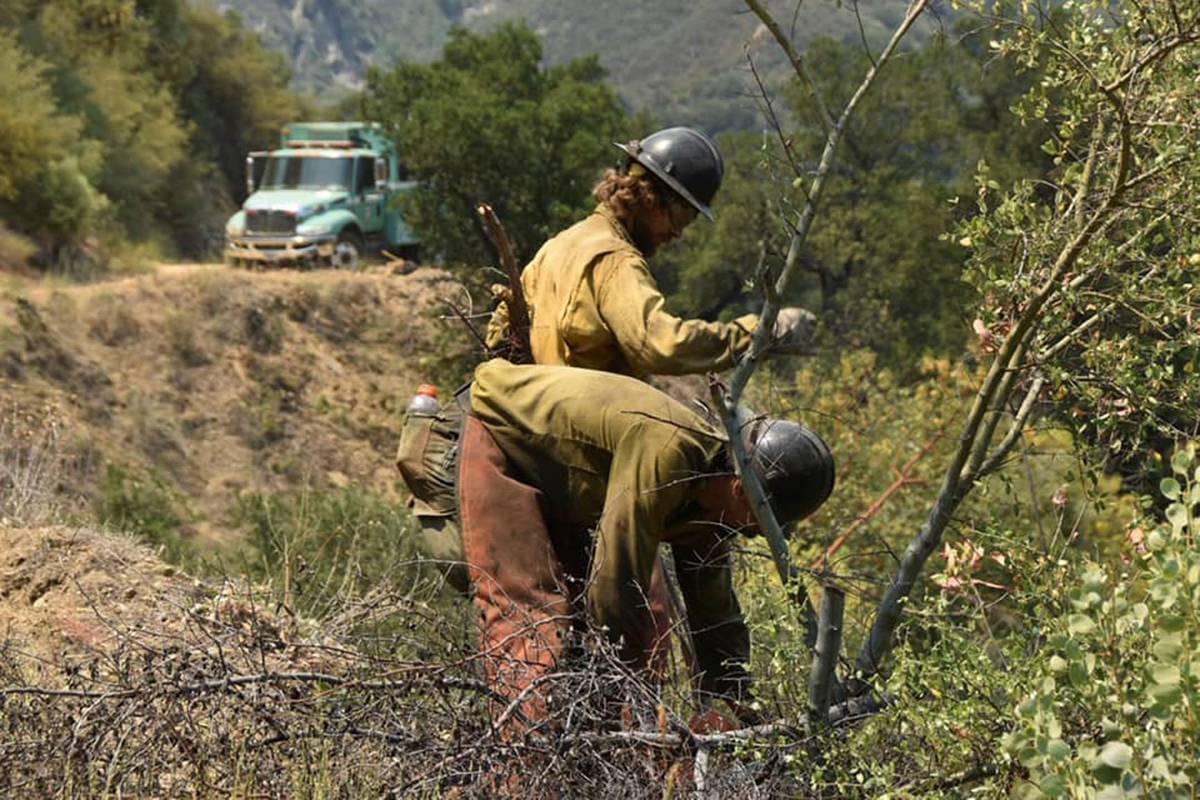Wildfire moves closer to Flagstaff, nearby forests closing
FLAGSTAFF, Ariz. — A wildfire in northern Arizona crept closer to the region’s largest city Tuesday, threatening to force people from their homes.
The lightning-caused fire near Flagstaff was one of dozens that have scorched large swaths of the U.S. West and kept firefighters busy as they hold out hope that the monsoon season will deliver some significant rain.
It made a significant run Monday but slowed its growth overnight. Crews were busy Tuesday identifying features in the landscape that could help slow the blaze that has burned 38 square miles.
“There’s a lot of vegetation out there that’s very old, has not had fire in it in a very long time and now has either been stressed or killed because of the drought,” fire information officer Noel Fletcher said. “It’s a lot of standing, dead fuel.”
Firefighters have yet to corral the perimeter. Crews were dropping fire retardant to keep it from moving into a canyon where it would be more difficult to tackle, and escaping where it could make a run on flatter land. They also were working to protect private property in the forest and lookout towers.
Evacuations were in place because of several other wildfires across Arizona, affecting mostly rural residents and campers.
More evacuations could go into effect if the large fire in northern Arizona continues toward Flagstaff, a mountain city with nearly 80,000 residents, a state university and an observatory where Pluto was discovered. The city is nestled among the largest contiguous ponderosa pine forest in the U.S. with an Army depot and veterans cemetery to the west and smaller communities on the outskirts.
A top-tier national management team will take over Thursday, said Matthew McGrath, a district ranger for the Coconino National Forest.
Two national forests in Arizona — the Coconino and the Kaibab — will close entirely to the public on Wednesday because of wildfire danger and limited resources.
The weather has been unrelenting lately, with hot and dry conditions combining with wind to fuel wildfires. The preparedness level for wildfire activity nationally was bumped up Tuesday to reflect more demand for firefighting resources.
More large wildfires were burning in Arizona than anywhere else in the country. Arizona had 14, followed by half as many in California. Utah and Colorado also had a handful of large wildfires.
Arizona already was at the highest preparedness level for wildfires. Nationally, the level rose to a 4 on a 1-5 scale Tuesday, according to the National Interagency Fire Center. It’s only the fourth time in the last 20 years to reach level 4 in June.
California blazes
Wildfires burned Tuesday in tinder dry vegetation in rugged central coast mountains and near an Eastern Sierra trailhead where hikers begin treks to the summit of Mount Whitney.
More than 500 firefighters were battling the Willow Fire, which has scorched nearly 4½ square miles south of Big Sur in Los Padres National Forest.
The blaze posed a threat to the Tassajara Zen Mountain Center, a Buddhist monastery located in a remote valley. Crews were setting up defenses to protect structures there and at a recreation center.
On the eastern flank of the Sierra Nevada, the Inyo Creek Fire in the Whitney Portal area near the town of Lone Pine thwarted hikers planning to climb Mount Whitney, the tallest peak in the contiguous United States.
The fire was officially estimated at 410 acres Tuesday morning but an updated number was expected later in the day, said Inyo National Forest spokeswoman Kirstie Butler.
Hikers were unable to begin treks at Whitney Portal and rangers were in the wilderness to divert returning hikers to other longer egress trails. A plan to escort hikers to about 30 cars they had parked in the portal area was foiled by the fire’s movement.























